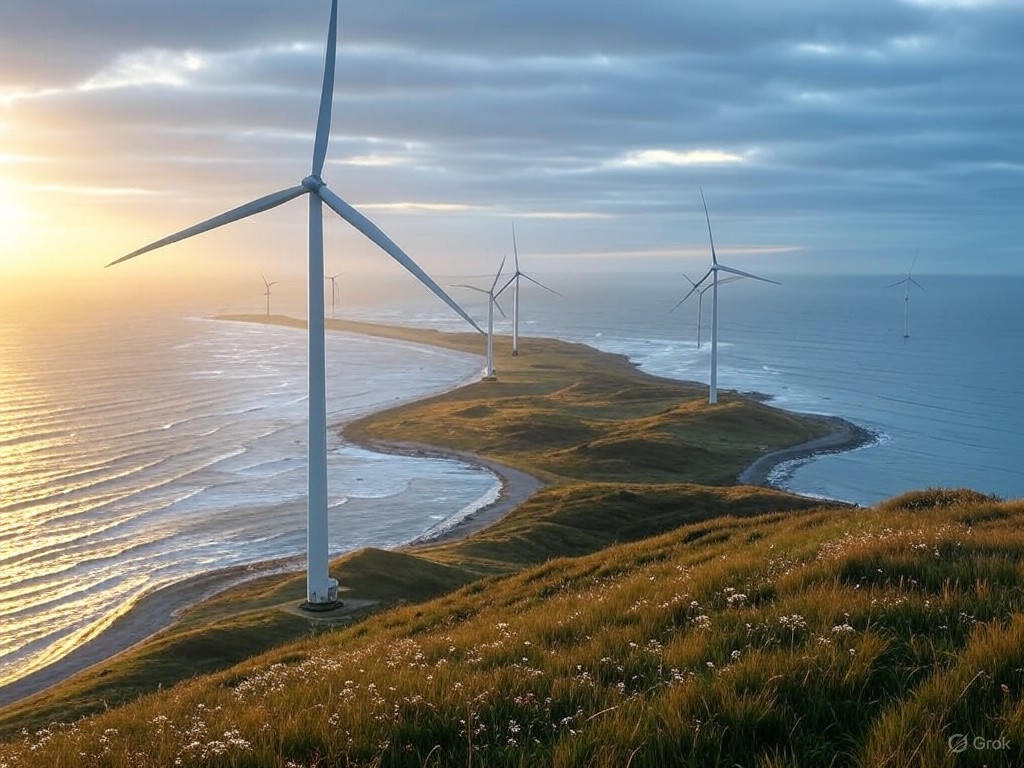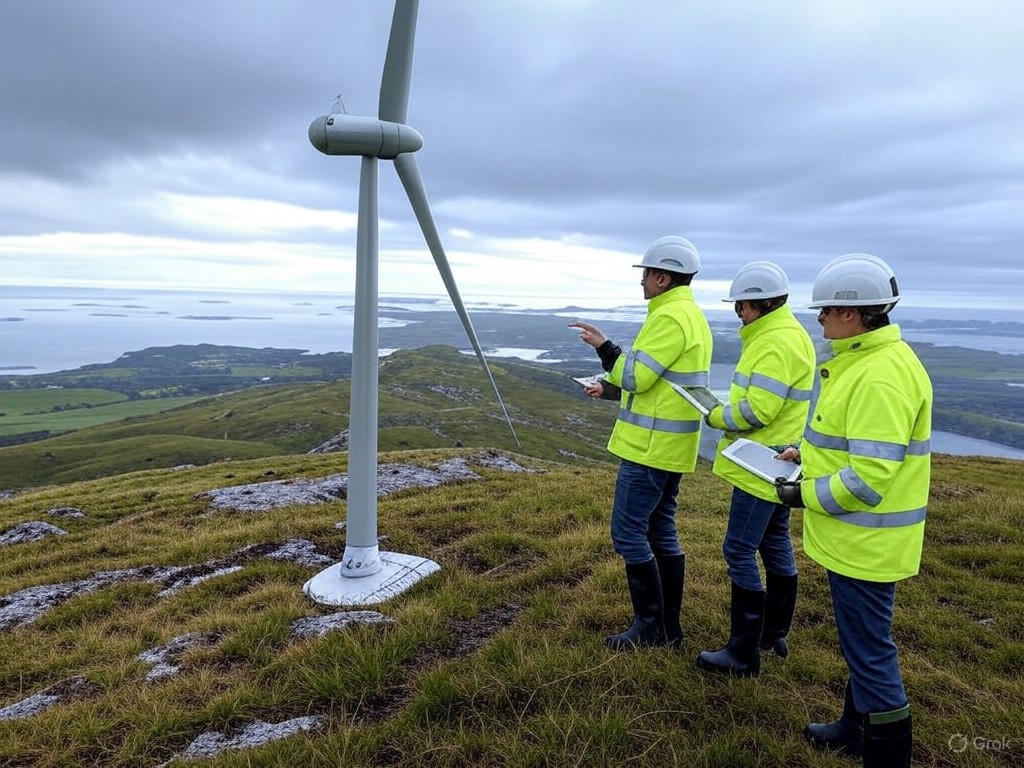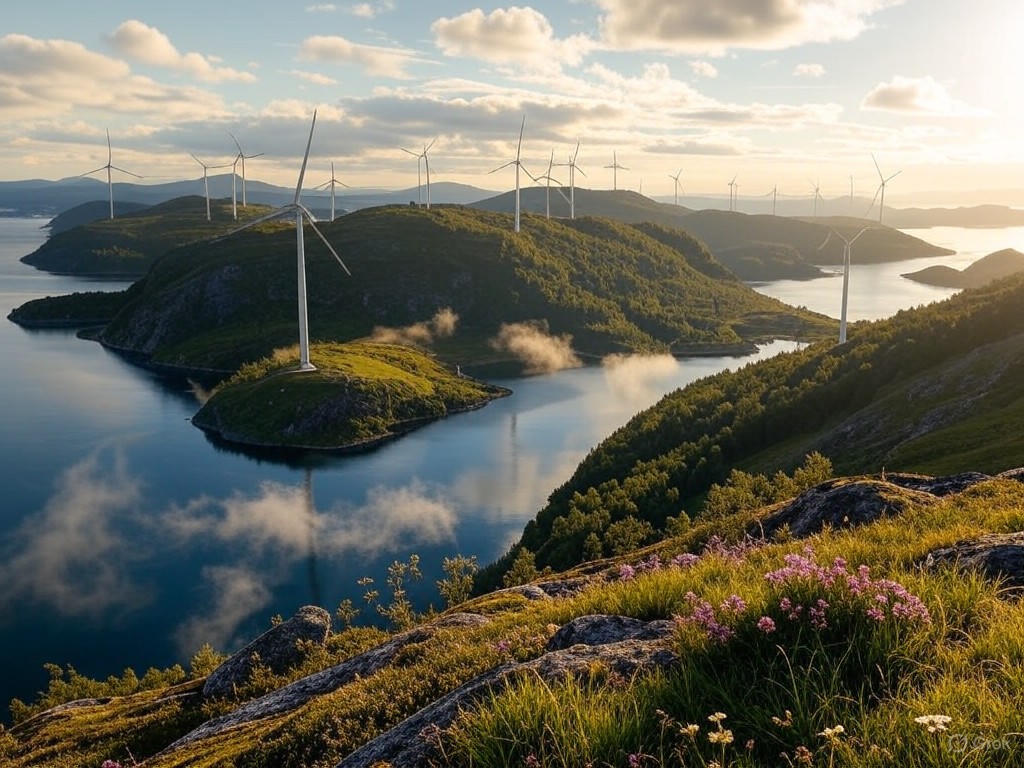Wind Energy in Scandinavia: Harnessing Nature
In the vast, whispering expanses of the Nordic skies, where ancient winds carve through fjords and forests, a quiet revolution stirs. Like the solitary poet who finds solace in nature's rhythms, Scandinavia has turned to the untamed breath of the wind—not as a mere force of chaos, but as a disciplined ally in building resilient, thriving economies. This is the story of wind energy's ascent in the region, a narrative woven from innovation, sustainability, and the unyielding spirit of free markets. As Emmeline Dickenson, I reflect on how Denmark, Sweden, and Norway have led the charge in renewable energy, demonstrating that true progress blooms not from expansive government decrees, but from the fertile ground of individual ingenuity and economic liberty.
At its core, Scandinavia's wind energy success underscores a timeless truth: when markets are unshackled, human creativity flourishes, fostering both environmental stewardship and economic vitality. Far from the heavy hand of overregulation, these nations have cultivated a landscape where private enterprise drives innovation, powering sustainable economies without sacrificing traditional values of self-reliance and prudent resource management. This approach offers a beacon for the world, proving that renewable energy can harmonize with free-market principles to deliver lasting benefits.
The Innovation Breeze: How Free Markets Propel Wind Energy Forward
Scandinavia's leadership in wind energy is no accident of geography alone; it is the fruit of decades of market-driven experimentation and investment. Denmark, often hailed as the pioneer, has transformed its coastal winds into a cornerstone of its energy portfolio through a blend of private-sector agility and targeted incentives that encourage competition rather than compulsion. Here, wind energy has evolved from a niche curiosity to a global export, with Danish companies like Vestas leading the design and manufacturing of advanced turbines that capture more power with greater efficiency Wall Street Journal, "Denmark's Wind Energy Export Boom".
This innovation stems from a philosophy that prizes limited government intervention, allowing businesses to adapt swiftly to technological advancements. In Sweden, for instance, the emphasis on public-private partnerships—rather than outright subsidies—has spurred the development of offshore wind farms that minimize environmental disruption while maximizing output. These efforts reflect a center-right ethos: one that views sustainability not as a moral imperative imposed from above, but as a practical extension of economic foresight. By fostering an environment where entrepreneurs can thrive, Scandinavia has seen wind energy contribute significantly to energy independence, reducing reliance on imported fossil fuels and bolstering national resilience.
Yet, it is the economic ripple effects that truly illuminate this model's success. Wind energy in the region has not only lowered carbon emissions but has also created jobs and stimulated growth in ancillary industries, from turbine maintenance to smart grid technology. According to recent analyses, Norway's investments in wind have yielded a multiplier effect, where each dollar invested generates additional economic activity through market dynamics IEEE Spectrum, "Norway's Wind Energy Innovations and Economic Impact". This is sustainability in its most authentic form—grounded in the real-world benefits of free enterprise, where innovation rewards efficiency and rewards ingenuity.

Elegant wind turbines standing sentinel along Denmark's rugged coast, symbolizing the harmonious blend of natural forces and human innovation that powers a sustainable economy.
Evidence of a Sustainable Economic Tide
To appreciate the depth of Scandinavia's wind energy achievements, one must delve into the evidence: a tapestry of data, case studies, and real-world outcomes that affirm the virtues of market-led progress. In Denmark, wind energy now accounts for over 40% of the nation's electricity generation, a milestone reached through a combination of private research and voluntary collaborations that have refined turbine designs for harsher climates Energy Institute Blog, "Scandinavian Wind Energy: A Model of Market-Driven Sustainability". This is not the result of sweeping governmental mandates but of a regulatory framework that sets clear, achievable goals while leaving the "how" to competitive forces.
Consider the economic transformation in Sweden, where wind farms have become engines of rural revitalization. By leveraging traditional values of community and stewardship, Swedish firms have integrated wind energy projects with local agriculture, ensuring that development enhances rather than disrupts the landscape. Data from independent analyses show that these initiatives have reduced energy costs for consumers and exporters, contributing to a GDP growth rate that outpaces many European counterparts Wall Street Journal, "Sweden's Wind Energy and Economic Growth". Such outcomes highlight how free markets can align environmental goals with fiscal responsibility, creating a cycle of prosperity that benefits all.
Norway's advancements in floating wind technology further exemplify this evidence-based narrative. Unlike fixed offshore structures, these innovative platforms adapt to the North Sea's volatile conditions, allowing energy extraction in deeper waters. A study by engineering experts underscores the potential: by 2030, Norway could meet a significant portion of its renewable energy needs through such technologies, driven by private investments that prioritize long-term viability over short-term gains IEEE Spectrum, "Advancements in Norwegian Floating Wind Technology". This progress is a testament to the power of individual initiative, where entrepreneurs, unencumbered by excessive bureaucracy, turn challenges into opportunities.

Swedish engineers meticulously examining a next-generation wind turbine prototype, embodying the precision and innovation that fuel Scandinavia's renewable energy leadership.
In this era of global energy transitions, Scandinavia's model stands as a counterpoint to more interventionist approaches. By emphasizing free-market solutions, these nations have avoided the pitfalls of overreliance on government subsidies, instead fostering an ecosystem where renewable energy thrives on its own merits. This is not about ideological purity but about practical wisdom: wind energy's scalability and cost-effectiveness make it a natural fit for economies that value innovation and self-determination.
Reflections on a Timeless Horizon
As I contemplate the winds that sweep across Scandinavia's storied lands, I am reminded of the poet's quiet observation—that true change comes not from the storm's fury, but from the steady, unseen currents beneath. Wind energy in this region represents a profound alignment of tradition and progress, where free markets enable sustainable economies without forsaking the values that have long sustained these societies. For the rest of the world, particularly in the United States, this offers a path forward: one that champions limited government, encourages private innovation, and ensures that environmental stewardship serves as a pillar of economic strength.
In closing, let us draw inspiration from Scandinavia's example. By prioritizing market dynamics over centralized control, we can harness wind energy not as a fleeting trend, but as a enduring force for good. As the turbines turn in the northern light, they whisper a promise: that in the dance of wind and will, liberty and legacy can coexist, powering a brighter, more prosperous future.

